
Fifth
2022/2023 SEASON April 6 – 8, 2023
Shostakovich’s
Symphony
Completely engaged. That’s how Joe Coyle feels about his life at Judson Manor.




An award-winning journalist who has lived in Paris, Santa Fe, and New York City, he arrived in July 2020 via the suggestion of a fellow resident. He’s been delighted ever since.

“As a writer, I enjoy spending time alone, and these surroundings are perfect: my apartment is quiet, and the views overlooking the Cleveland Museum of Art are lovely. But by far the best part of Judson is the people. Everyone is so knowledgeable about art and culture. I wanted to have stimulating company to spend my time with, and I’ve found that here. These are wonderful, interesting people,” says Joe.
Read the full story at judsonsmartliving.org/blog
Judson Park Cleveland Heights | Judson Manor University Circle | South Franklin Circle Chagrin Falls Learn more about how Judson can bring your retirement years to life! judsonsmartliving.org | 216.446.1579
“Expanding my curiosity about life is what it’s all about.”
Joe Coyle
2022/2023 SEASON
Shostakovich’s Fifth Symphony
Thursday, April 6, 2023, at 7:30 p.m.
Friday, April 7, 2023, at 7:30 p.m.
Saturday, April 8, 2023, at 8:00 p.m.
Symphony No. 2, “The Age of Anxiety” 35 minutes
PART I
The Prologue: Lento moderato
The Seven Ages: Variations 1–7
The Seven Stages: Variations 8–14
PART II
The Dirge: Largo
The Masque: Extremely fast
The Epilogue: L’istesso tempo — Adagio —
Andante con moto
Jean-Yves Thibaudet, piano
INTERMISSION 20 minutes
Symphony No. 5 in D minor, Opus 47 45 minutes
I. Moderato
II. Allegretto
III. Largo
IV. Allegro non troppo
Total approximate running time: 1 hour 40 minutes
Thank you for silencing your electronic devices.
clevelandorchestra.com THE CLEVELAND ORCHESTRA
COVER:
JACK, JOSEPH AND MORTON MANDEL CONCERT HALL AT SEVERANCE MUSIC CENTER
PHOTO BY ROGER
MASTROIANNI
Leonard Bernstein (1918–1990)
Dmitri Shostakovich (1906–1975)
Rafael Payare, conductor
2022/2023 Season Sponsor
“ . . . Thank you. I need more bliss and beauty in my life. Don’t we all? And because Cleveland Orchestra is the finest in the world, I want to relish its brilliance . . . I want it to keep emitting that radiant bliss.”
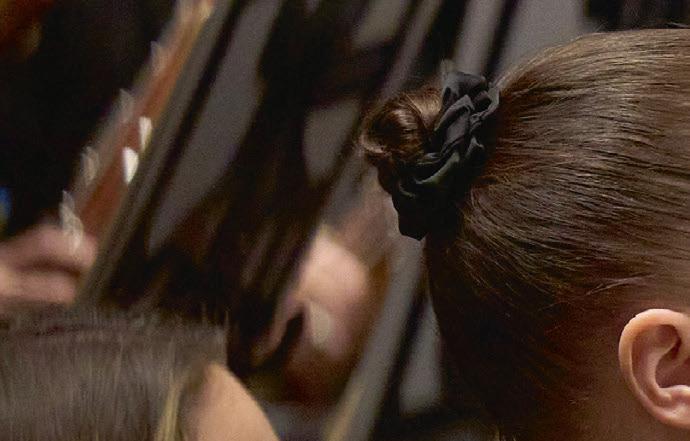 Sarah Maxwell, passionate Orchestra supporter
Sarah Maxwell, passionate Orchestra supporter
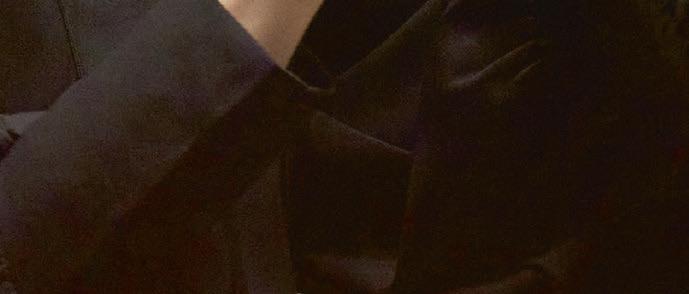




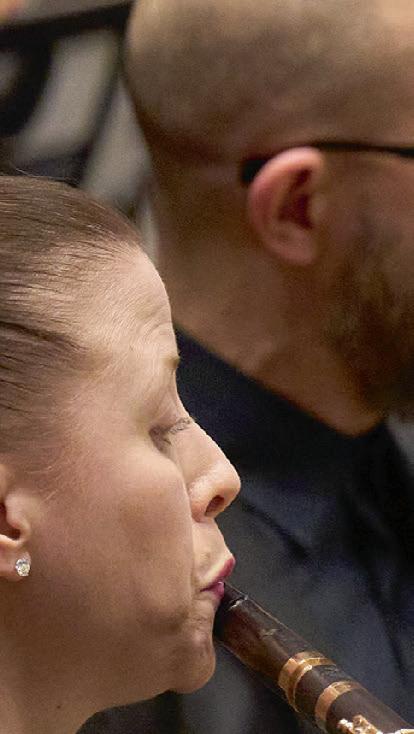

Season’s end marks your last chance to support the magical, musical moments ou love. Community support makes every moment on stage possible.
Play your par t — make your donation today!

clevelandorchestra.com/give



































IN AUGUST 1959 , the New York Philharmonic and Leonard Bernstein, entering his second year as its music director, set off on a 10-week tour of Europe and the Middle East sponsored by the US State Department. Eighteen of the 50 performances were scheduled in the USSR.
In an attempt at cultural diplomacy, the concerts in Moscow and Leningrad (modernday St. Petersburg) showcased American composers alongside selected Russian works. Dmitri Shostakovich’s Symphony No. 5 was performed in the presence of the composer, who later remarked that he was “very taken by the performance.”

Bernstein would also later reflect on this meeting and became a noted interpreter of the Fifth Symphony. In 1966, he threw a 60th birthday celebration for Shostakovich during one of his taped Young People’s Concerts. “I had an impression of a very reserved man, speaking very little, a bit nervous, and very shy,” he said, recalling their meeting seven years earlier. “Out of this shy man, hidden behind his eyeglasses, has come some of the most powerful, brash, un-shy music ever written.”
Though born under extremely different circumstances, both Bernstein and Shostakovich struggled and succeeded in creating meaningful, lasting art in spite of their society’s prescribed boundaries. Whether facing Joseph McCarthy’s blacklist or Stalin’s purges, it requires an artist of great courage and conviction to create authentic work under looming threats of being silenced, or worse, in Shostakovich’s case.
Tonight’s program, featuring conductor Rafael Payare and pianist Jean-Yves Thibaudet, pairs two works that underline this unease — be it political, emotional, or spiritual. Bernstein’s Symphony No. 2, “The Age of Anxiety,” is about the search for faith in a world that has suffered two world wars and immeasurable tragedy. Meanwhile Shostakovich’s Symphony No. 5, written to restore the composer to good graces, is no mea culpa but the testimony of one who has endured excruciating circumstances.
In that 1966 concert, Bernstein showered the highest praise on Shostakovich’s music, calling it “noble, original, and deeply moving.” The same can be said for his own compositions, and for both men.
Angel
THE CLEVELAND ORCHESTRA | 3 clevelandorchestra.com INTRODUCTION
PHOTO
— Amanda
COURTESY OF LIBRARY OF CONGRESS, MUSIC DIVISION
Leonard Bernstein (on stage) shakes Dmitri Shostakovich’s hand before leading a performance of Shostakovich’s music in Moscow in 1959.
Symphony No. 2, “The Age of Anxiety”
By Leonard Bernstein
BORN : August 25, 1918, in Lawrence, Massachusetts
DIED: October 14, 1990, New York City
Ω COMPOSED : 1947–49
Ω WORLD PREMIERE: April 8, 1949, by the Boston Symphony Orchestra, conducted by Serge Koussevitzky and with the composer as the piano soloist
Ω CLEVELAND ORCHESTRA PREMIERE: February 4, 1982, conducted by Lorin Maazel and featuring principal keyboardist Joela Jones
Ω ORCHESTRATION: 2 flutes, piccolo, 2 oboes, english horn, 2 clarinets, bass clarinet, 2 bassoons, contrabassoon, 4 horns, 3 trumpets, 3 trombones, tuba, timpani, percussion (bass drum, cymbals, snare drum, tenor drum, triangle, tam-tam, glockenspiel, xylophone, chimes, temple blocks), 2 harps, celesta, upright piano, and strings, plus solo piano
Ω DURATION: about 35 minutes
IN 1947 , W. H. AUDEN published the 80-page poem The Age of Anxiety. Set in a New York bar in the final months of World War II, it brings together four lonely characters for a long evening of discussion, drink, dancing, and eventually departure from their odd quartet. The poem, subtitled “A Baroque Eclogue” for the classical form of poetry on which it’s based, provoked heated responses. Reviews ranged from calling it Auden’s “one dull book, his one failure,” to T. S. Eliot’s assessment that it was his “best work to date.”
Leonard Bernstein fell into the latter camp, stating, “I regard Auden’s poem as one of the most shattering examples of pure virtuosity in the history of British poetry.” For good measure, he wasn’t alone — it won the 1948 Pulitzer Prize for Poetry — but its search for faith resonated strongly with the Jewish Bernstein. Written in 1942, his First Symphony, “Jeremiah,” explicitly invokes a crisis of faith from the Hebrew Book of Lamentations,
4 | 2022/2023 SEASON
THE MUSIC
PHOTO
Leonard Bernstein photographed during rehearsals of his Mass in September 1971. The search for faith occupied Bernstein and his work throughout his life.
COURTESY OF THE LIBRARY OF CONGRESS, PRINTS AND PHOTOGRAPHS DIVISION
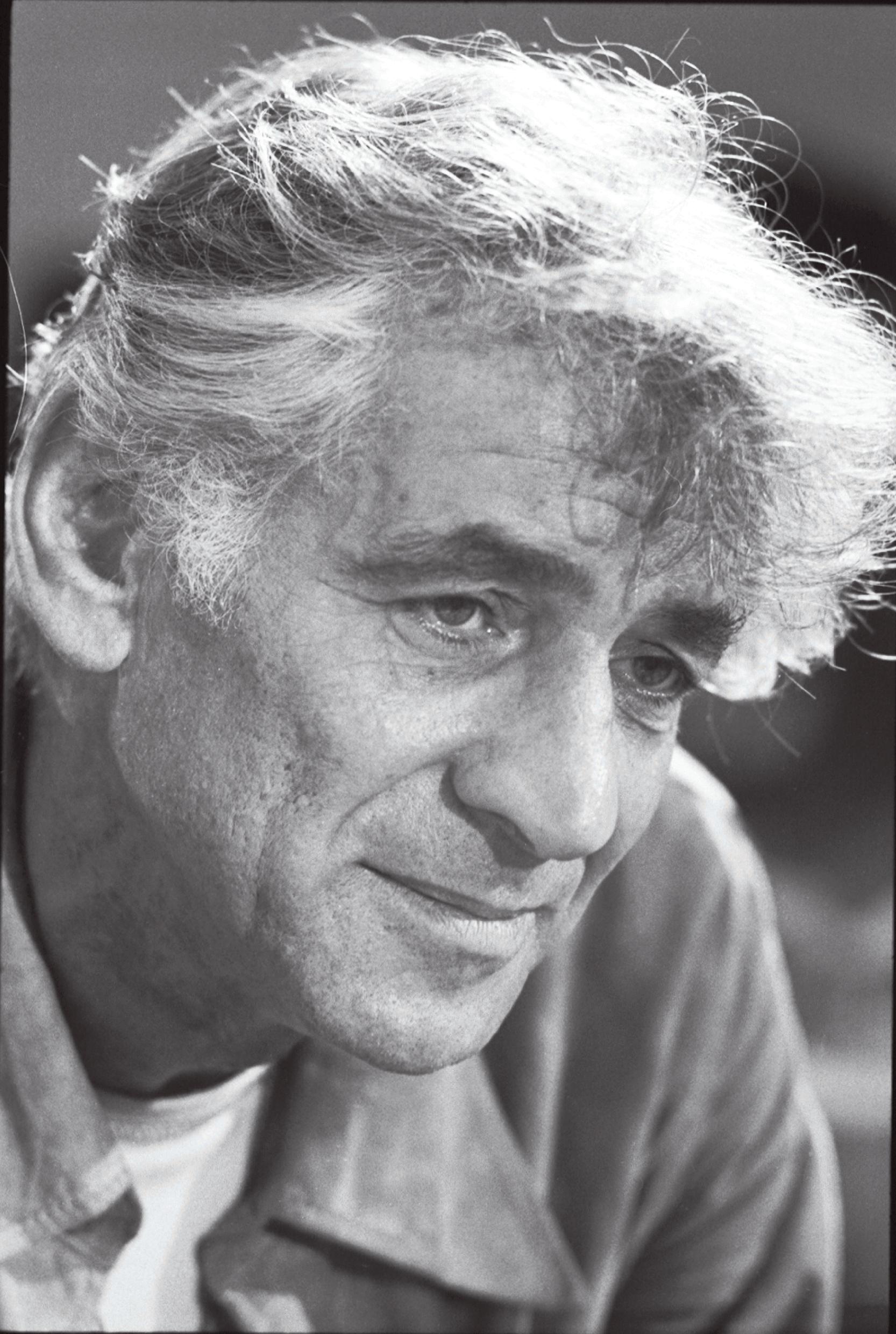
THE CLEVELAND ORCHESTRA | 5 clevelandorchestra.com
questioning God in the midst of the destruction of Jerusalem. Over the next five years that uncovered the horrors of the Holocaust and the subsequent movement for a Jewish State, this theme occupied much of his thought. In fact, Bernstein debuted the fourth section of the Second Symphony, “The Dirge,” at one of the first performances of the newly renamed Israel Philharmonic Orchestra in Tel Aviv, days after Bernstein conducted the group outdoors in Beersheba during the Arab-Israeli War. No similar heroics are mounted by the four strangers from Auden’s poem: Quant, a wearied widower and clerk; Malin, a medical intelligence officer of the Canadian Air Force; Rosetta, a buyer for a department store; and Emble, a recent enlistee in the US Navy. The poem unfolds in six sections. It opens on “The Prologue,” in which the four meet. Once they are seated together in a booth we launch into “The Seven Ages,” which

enumerates the acts of man following the path Shakespeare laid out in As You Like It. This is paralleled in the third section, “The Steven Stages,” a metaphorical journey along various routes, in various modes of transportation, and in various groupings. “The Dirge” brings the four to Rosetta’s apartment to extend the evening into the penultimate section, “The Masque,” an Elizabethan term for a themed costume ball. Yet, the party continues through “fear of spoiling the fun for others” rather than revelry, and Emble passes out in Rosetta’s bedroom. As morning arrives in “The Epilogue,” Malin and Quant head home, separately.
Bernstein’s symphony is written in six movements, each corresponding in order to the poem. The composer claimed that his faithfulness to Auden’s poem was somewhat unintentional. “I was merely writing a symphony inspired by a poem and following the general form of that poem. Yet, when each section was finished I discovered, upon re-reading, detail after detail of programmatic relation to the poem, details that had ‘written themselves,’ wholly unplanned and unconscious,” he wrote.
The four characters are all voiced by the solo piano line. Auden claimed that Quant, Malin, Rosetta, and Emble represented, respectively, intuition, thought, feeling, and sensation, yet the similarity of their verses spoken in alliterative tetrameter outweigh any differences. Their individual pursuits for meaning meld into one universal quest.
Angel
6 | 2022/2023 SEASON THE MUSIC
— Amanda
W. H. Auden and Leonard Bernstein discuss Bernstein’s The Age of Anxiety at Bernstein’s apartment in 1950.
PHOTO BY BEN GREENHA US/COURTESY OF BOSTON SYMPHONY ORCHESTRA ARCHIVES
Composer’s Note
Leonard Bernstein wrote the following note regarding his Symphony No. 2, “The Age of Anxiety,” in 1949 to coincide with its premiere.
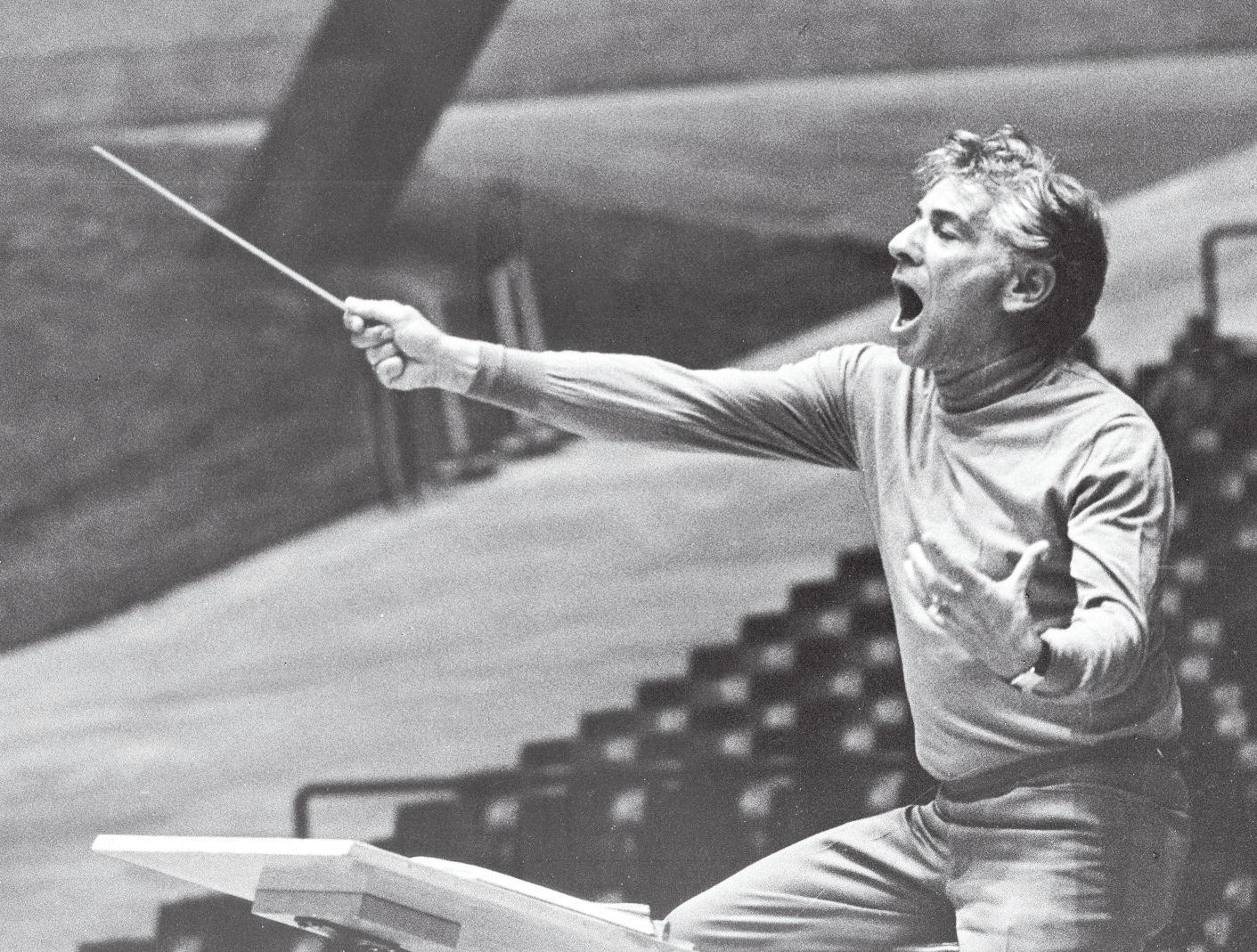
PART ONE
The Prologue finds four lonely characters, a girl and three men, in a Third Avenue bar, all of them insecure, and trying, through drink, to detach themselves from their conflicts, or, at best, to resolve them. They are drawn together by this common urge and begin a symposium on the state of man. Musically the Prologue is a very short section consisting of a lonely improvisation by two clarinets, echotone, and followed by a long descending scale, which acts as a bridge into the realm of the unconscious, where most of the poem takes place.
The Seven Ages. The life of man is reviewed from the four personal points of view. This is a series of variations which differ from conventional varia-
tions in that they do not vary any one common theme. Each variation seizes upon some feature of the preceding one and develops it, introducing, in the course of the development, some counter-feature upon which the next variation seizes. It is a kind of musical fission, which corresponds to the reasonableness and almost didactic quality of the four-fold discussion.
The Seven Stages. The variation form continues for another set of seven, in which the characters go on an inner and highly symbolic journey according to a geographical plan leading back to a point of comfort and security.
THE CLEVELAND ORCHESTRA | 7 clevelandorchestra.com
ΩΩΩ
above: Leonard Bernstein leads The Cleveland Orchestra in rehearsal at Blossom Music Center in July 1970. PHOTO BY PETER HASTINGS
ΩΩΩ The four try every means, going singly and in pairs, exchanging partners, and always missing the objective. When they awaken from this dream-odyssey, they are closely united through a common experience (and through alcohol), and begin to function as one organism. This set of variations begins to show activity and drive and leads to a hectic, though indecisive, close.
PART TWO
The Dirge is sung by the four as they sit in a cab en route to the girl’s apartment for a nightcap. They mourn the loss of the “colossal Dad,” the great leader who can always give the right orders, find the right solution, shoulder the mass responsibility, and satisfy the universal need for a father-symbol. This section employs, in a harmonic way, a twelve-tone row out of which the main theme evolves. There is a contrasting middle section of almost Brahmsian romanticism, in which can be felt the self-indulgent, or negative, aspect of this strangely pompous lamentation. (I sometimes feel that the most appropriate musical version of the Dirge should be a raucous blues.)
The Masque finds the group in the girl’s apartment, weary, guilty, determined to have a party, each one afraid of spoiling the others’ fun by admitting that he should be home in bed. This is a scherzo for piano and percussion alone (including harp, celesta, glockenspiel, and xylophone) in which a kind of fantastic piano-jazz is employed, by turns nervous, sentimental, selfsatisfied, vociferous. The party ends
in anticlimax and the dispersal of the actors; in the music the piano protagonist is traumatized by the intervention of the orchestra for four bars of hectic jazz. When the orchestra stops, as abruptly as it began, a pianino in the orchestra is continuing the Masque, repetitiously and with waning energy, as the Epilogue begins. Thus a kind of separation of the self from the guilt of escapist living has been effected, and the protagonist is free again to examine what is left beneath the emptiness.
The Epilogue. What is left, it turns out, is faith. The trumpet intrudes its statement of “something pure” upon the dying pianino; the strings answer in a melancholy reminiscent of the Prologue — again and again the winds reiterate “something pure” against the mounting tension of the strings’ loneliness. All at once the strings accept the situation, in a sudden radiant pianissimo, and begin to build, with the rest of the orchestra, to a positive statement of the newly recognized faith.
Throughout the Epilogue, the pianoprotagonist has taken no part, but has observed it, as one observes such development on a movie screen, or in another human personality. At the very end the pianist seizes upon it with one eager chord of confirmation, although the performer has not participated in the anxiety-experience leading to this fulfillment. The way is open; but, at the conclusion, is still stretching long in front of us.
— Leonard Bernstein
8 | 2022/2023 SEASON THE MUSIC
Editor’s Note: Bernstein would revise the Epilogue in 1965 to include a cadenza for the soloist.
Symphony No. 5 in D minor, Opus 47
By Dmitri Shostakovich
BORN : September 25, 1906, in St. Petersburg
DIED: August 9, 1975, in Moscow
Ω COMPOSED : 1937
Ω WORLD PREMIERE: November 21, 1937, with the Leningrad Philharmonic Orchestra conducted by Yevgeny Mravinsky
Ω CLEVELAND ORCHESTRA PREMIERE: October 30, 1941, led by music director Artur Rodziński, who also conducted the US premiere of the work on April 9, 1938, with the NBC Symphony
Ω ORCHESTRATION: 2 flutes, piccolo, 2 oboes, 2 clarinets, E-flat clarinet, 2 bassoons, contrabassoon, 4 horns, 3 trumpets, 3 trombones, tuba, timpani, percussion (bass drum, snare drum, tam-tam, cymbals, triangle, glockenspiel, and xylophone), 2 harps, celeste, piano, and strings.
Ω DURATION: about 45 minutes
ONE OF THE MOST frequently performed symphonies of the 20th century, Shostakovich’s Fifth has achieved the status of a modern classic. Western audiences have long admired its great dramatic power and melodic richness.
But the history of the work and its deeply ambiguous Russian context reveal additional layers of meaning that, more than 85 years after the premiere, we are still trying to understand.
Shostakovich wrote the Fifth Symphony in what was certainly the most difficult year of his life. On January 28, 1936, an unsigned editorial in Pravda, the daily paper of the Communist Party, brutally attacked his opera Lady Macbeth of the Mtsensk District, denouncing it as
“muddle instead of music.” This condemnation resulted in a sharp decrease of performances of Shostakovich’s music in the ensuing months. Even worse, Shostakovich, whose first child was born in May 1936, lived in constant fear of further reprisals, denunciations, and possibly even more dire acts.
The Communist Party, however, quickly realized that the Soviet Union’s musical life couldn’t afford to lose its greatest young talent, and Shostakovich was granted a comeback. Less than a year after being forced to withdraw his Fourth Symphony, Shostakovich heard his Fifth premiered with resounding success in Leningrad on November 21, 1937. But by that time, the Great Terror had begun,
THE CLEVELAND ORCHESTRA | 9 clevelandorchestra.com
with political show trials resulting in numerous death sentences and mass deportations to labor camps. The Great Terror claimed the lives of some of the country’s greatest artists — including the poet Osip Mandelstam, the novelist Isaac Babel, and the theater director Vsevolod Meyerhold — but Shostakovich was spared.
Could it be that the qualities we admire in the Fifth Symphony today are the same ones that returned the composer to favor in his time? Shostakovich clearly made a major effort to write a “classical” piece here, one that would be acceptable to the authorities and far removed from his avant-garde Fourth Symphony. Whether that makes this new symphony “A Soviet Artist’s Creative Response to Just Criticism,” as it was officially designated at the time, is another question.
The music is so profound as to transcend any kind of political expediency. The symphony was, without question, a response to something, but not in the sense of a chastised schoolboy mending his ways. Rather, this is a great artist reacting to the cruelty and insanity of the era.
A lot of ink has been spilled over the meaning of this symphony. From the beginning, Shostakovich clearly had a special message to communicate when he replaced the usual fast-paced first movement with a brooding opening that stays in a slow tempo for half its length. (Shostakovich made a habit of avoiding fast first movements, opening his Symphonies Nos. 6, 8, and 10 in similar ways.)
The third and fourth movements are equally telling with what seems to be completely transparent memorial music followed by an ambiguously triumphant ending.
An official Soviet interpretation of the Fifth Symphony was propounded by the novelist Aleksey Tolstoy (a relative of Leo Tolstoy, the author of War and Peace), who, even though he was a royal count by birth, was loyal to the Soviet regime. In an influential article, Tolstoy viewed the symphony as a kind of musical Bildungsroman, or coming-of-age story. This interpretation was echoed in an often-quoted article, published under Shostakovich’s name but likely not written by him: “The theme of my symphony is the formation of a personality. At the center of the work’s conception I envisioned just that: a man in all his suffering.... The symphony’s finale resolves the tense and tragic moments of the preceding movements in a joyous, optimistic fashion.”
Yet critics — even Soviet ones — have had a hard time reconciling this with what they actually heard. The famous passage in Testimony, Shostakovich’s purported memoirs as edited (and possibly tampered with) by Solomon Volkov, reflects a radically different view: “It’s as if someone were beating you with a stick and saying, ‘Your business is rejoicing, your business is rejoicing,’ and you rise, shaky, and go marching off, muttering, ‘Our business is rejoicing, our business is rejoicing’.”
10 | 2022/2023 SEASON THE MUSIC
Dmitri Shostakovich pictured in 1950. Throughout his life, Shostakovich struggled to create meaningful work under threat of Soviet critics.
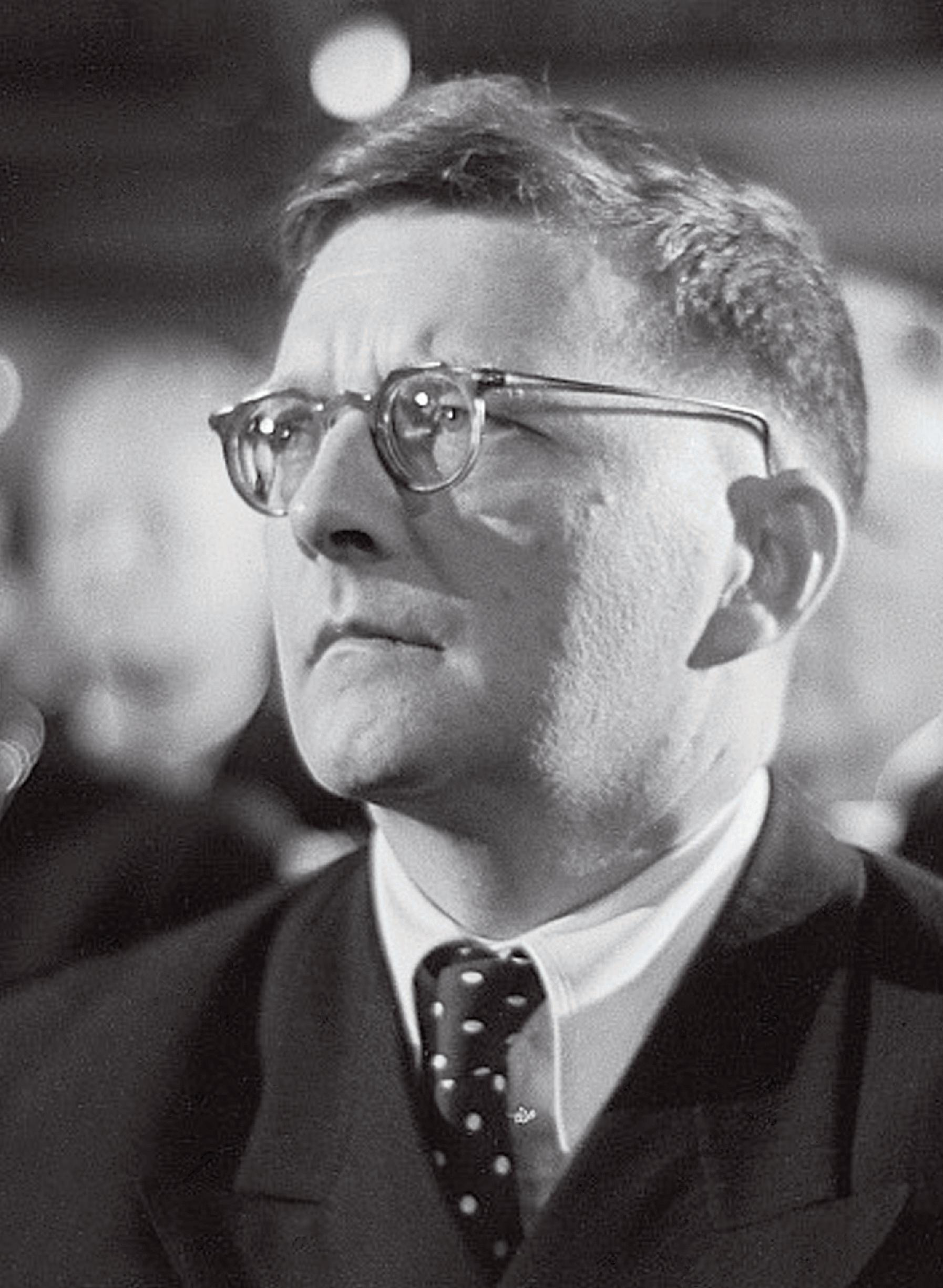
THE CLEVELAND ORCHESTRA | 11 clevelandorchestra.com
PHOTO BY ROGER & RENATE RÖSSING / COURTESY OF WIKIMEDIA COMMONS
As musicologist Richard Taruskin has noted, this interpretation was actually shared by many people present at the premiere, who had serious doubts about the optimism of the finale. To some, this emotional ambiguity was a flaw in the work, while others saw it as a sign of a hidden message. Both sides of the political fence felt that the finale did not dispel the devastating effects of the third-movement Largo.
Shostakovich was 11 years old during the Russian Revolution of 1917 and knew no political reality other than communism. Many Russians in the 1920s believed that a new world under communism was sure to be an improvement over the czarist regime. Yet, by the time of the Stalinist purges of the 1930s, many of the country’s best minds had become profoundly disillusioned, especially in view of the enormous sacrifices of human lives that the Party claimed as a price of progress. Even though they were facing a horrible situation, they saw no viable political alternatives for their country. The Soviet government demanded triumphant optimism in all the arts, and failure to deliver it could result in severe criticism, or worse. Voicing even the slightest dissent with the regime could result in instant deportation, disappearance, or death. With its ambiguous ending, Shostakovich’s Fifth stands as a gripping monument to all whose voices were silenced by force or threat.
A dramatic and ominous opening motif sets the stage for the symphony’s first movement; a second theme, played
by the violins in a high register, is warm and lyrical but at the same time eerie and distant. The music seems to hesitate for a long time, until the horns begin a march theme that leads to intense motivic development and a speeding up of the tempo. It is not a funeral march, but neither is it exactly triumphant. Reminiscent perhaps of some of Mahler’s march melodies but even grimmer, its harmonies modulate freely from key to key, giving this march an oddly sarcastic character. At the climactic moment, the two earlier themes return. The dotted rhythms from the opening are even more powerful than before, but the second lyrical theme, now played by the flute and the horn to the soothing harmonies of the harp, has lost its previous edge and brings the movement to a peaceful, almost otherworldly close.
The brief Scherzo movement brings some relief from the preceding drama. Its Ländler-like melodies again bear witness to Mahler’s influence, both in the Scherzo proper and the ensuing Trio section, whose theme is played by a solo violin and then by the flute.
The special tone color of the third movement is due to the absence of brass instruments, as well as to the fact that the violins are divided beyond the usual two groups and into three. This heartwrenching music turns the march of the first movement into a lament, also incoporating a theme resembling a Russian Orthodox funeral chant. The tension
12 | 2022/2023 SEASON
MUSIC
THE
Dmitri Shostakovich at work in the study of his flat on Kirov Street, Moscow, circa 1946.
gradually increases and finally erupts about two-thirds of the way through the movement. The opening melody then returns in a more intense rendering. To the end, the music preserves the unmistakable character of grief.
The third movement, marked in the score as Largo (extremely slow), was widely understood as a memorial for the Soviet Army Marshal Mikhail Tukhachevsky, a benefactor and a personal friend of the composer who fell victim to the Great Terror at the time Shostakovich was working on his symphony. At the first performance, many people wept openly during this movement, perhaps thinking of their own loved ones who had disappeared.

The last movement attempts to resolve the enormous tension that has built up over the course of the symphony by introducing a relatively light-hearted march tune. Yet after an exciting development, the music suddenly stops on a set
of harsh fortissimo chords and a slower, more introspective section begins with a haunting horn solo. Richard Taruskin has shown that this section quotes a setting for voice and piano of a Pushkin poem (“Vozrozhdenie” or “Rebirth,” Opus 46, No. 1), which Shostakovich had written just before the Fifth Symphony. The Pushkin poem intones: “Delusions vanish from my wearied soul, and visions arise within it of pure primeval days.” This quiet intermezzo ends abruptly with the entrance of timpani and snare drum, ushering in a recapitulation of the march tune, played at half its original tempo. Merely a shadow of its former self, the melody is elaborated contrapuntally until it suddenly alights on a bright D-major chord in full orchestral splendor — remaining unchanged for more than a minute to end the symphony.
— Peter Laki
THE CLEVELAND ORCHESTRA | 13 clevelandorchestra.com
PHOTO
Peter Laki is a musicologist and frequent lecturer on classical music, and a visiting associate professor at Bard College.
COURTESY OF DSCH PUBLISHERS
State and federal dollars through the Ohio Arts Council supported your arts experience today.


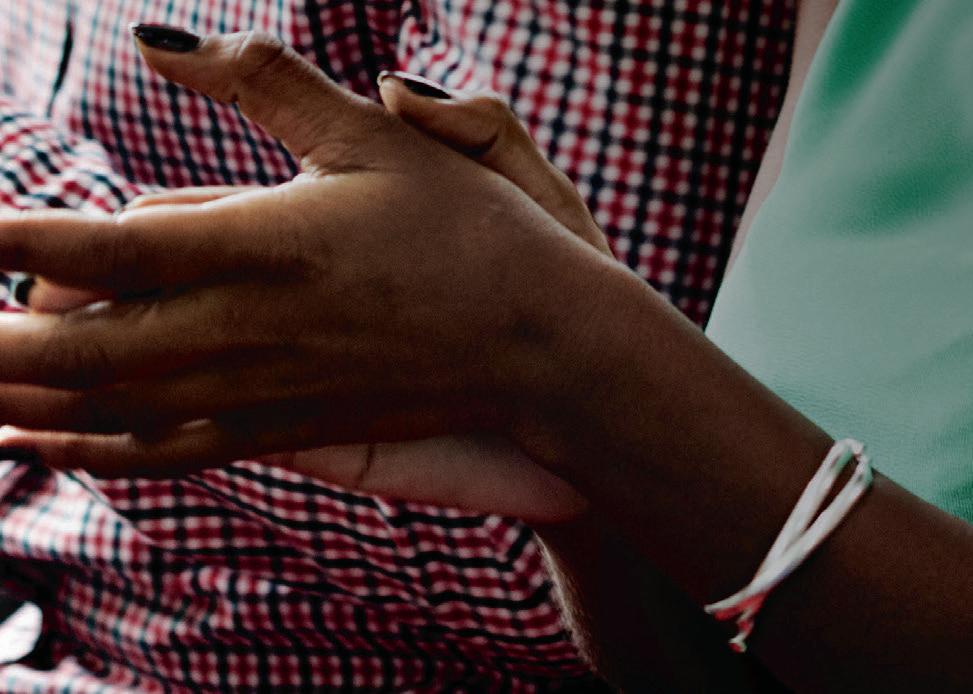

WHERE WILL THE ARTS TAKE YOU NEXT ? VISIT ARTSINOHIO.COM

@OHIOARTSCOUNCIL | #ARTSOHIO | OAC.OHIO.GOV



With a 100,000 sq. ft. showroom and 27 galleries, we’re sure you’ll find more than enough room. Need More Leg Room? 34300 Solon Road | Solon, OH | 440-248-2424 | 800-260-2949 One block south of Rt. 422 & SOM Center Road 9-9 M/Th | 9-5:30 Tu/W/F/Sa | www.sedlakinteriors.com Complimentary Delivery and Set-Up Within 60 Miles. CELEBRATING









™ ljicollisioncenter.com Orange Village Do YOU LOVE Horseshoe Lake? Do YOU want to HELP SAVE Horseshoe Lake? Check Out the Horseshoe Lake Restoration Plan www.SaveHorseshoeLake.com/FOHSL-Plan Customer Confidence – Priority One Lauren Angie Jill Strauss fourth generation in the industry LJI builds confidence in every customer and ensures quality repairs and superior customer service. Our commitment is to achieve and retain customer loyalty for life! 27100 Chagrin Blvd.1640 Lee Rd. NOW TWO LOCATIONS LJI builds confidence in every customer and ensures quality repairs and superior customer service. Our commitment is to achieve and retain customer loyalty for life! 27100 Chagrin Blvd. at I-271 Orange Village (216) 1640 Lee Rd. at Mayfield Cleveland Hts. 364-7100 (216) 932-7100 TWO LOCATIONS Customer Confidence – Priority One™ ljicollisioncenter.com


Adella, our streaming service and app, features on-demand portraits, music showcases, behind-thescenes footage and our flagship In Focus premium concert series, available anytime & anywhere THE CLEVELAND ORCHESTRA DIGITAL CONCERTS STREAMING NOW! Visit Adella.live to start your free trial.

Rafael Payare
RAFAEL PAYARE’S profound musicianship, technical brilliance and charismatic presence on the podium has elevated him as one of today’s most sought-after conductors. The 22/23 season marks his first season as music director of Orchestre Symphonique de Montréal (OSM) and his fourth season as music director of San Diego Symphony Orchestra.
Mr. Payare was previously principal conductor and music director of the Ulster Orchestra (2014–19), with whom he appeared at the BBC Proms in 2016 and 2019. He now serves as its conductor laureate.

He has worked with many of the world’s leading ensembles including the Vienna Philharmonic, Staatskapelle Dresden, Tonhalle Orchestra Zürich, Leipzig Gewandhaus Orchester, London Symphony Orchestra, Munich Philharmonic, Orchestra dell’Accademia Nazionale di Santa Cecilia, Chamber Orchestra of Europe, Mahler Chamber Orchestra, Czech Philharmonic, and Sinfonieorchester de Bayerischen Rundfunks. Since making his North American debut with the Chicago Symphony in 2015, he has worked with the major orchestras of Boston, Pittsburgh, Philadelphia, Los Angeles, and Cleveland, where he debuted in summer 2021.
Mr. Payare’s 22/23 season includes a launch of a multi-year Mahler cycle with the OSM, as well as his first European tour with the orchestra. He makes his Carnegie Hall debut with the OSM, as
well his debut with the New York Philharmonic. Other highlights include returns to The Cleveland Orchestra, Los Angeles and Munich Philharmonic Orchestras, as well as the London and San Francisco Symphony Orchestras.
A dedicated opera conductor, Mr. Payare has appeared at the Glyndebourne Festival, Staatsoper Berlin, Royal Stockholm Opera, and Royal Danish Opera. The current season sees his debut at the Royal Opera House, Covent Garden. Born in 1980 and a graduate of the celebrated El Sistema in Venezuela, Mr. Payare began his formal conducting studies in 2004 with José Antonio Abreu. He has conducted and served as principal horn of the Simón Bolívar Symphony Orchestra. In May 2012, Mr. Payare was awarded first prize at the Malko International Conducting Competition.
THE CLEVELAND ORCHESTRA | 19 clevelandorchestra.com
THE CONDUCTOR
PHOTO BY BGE
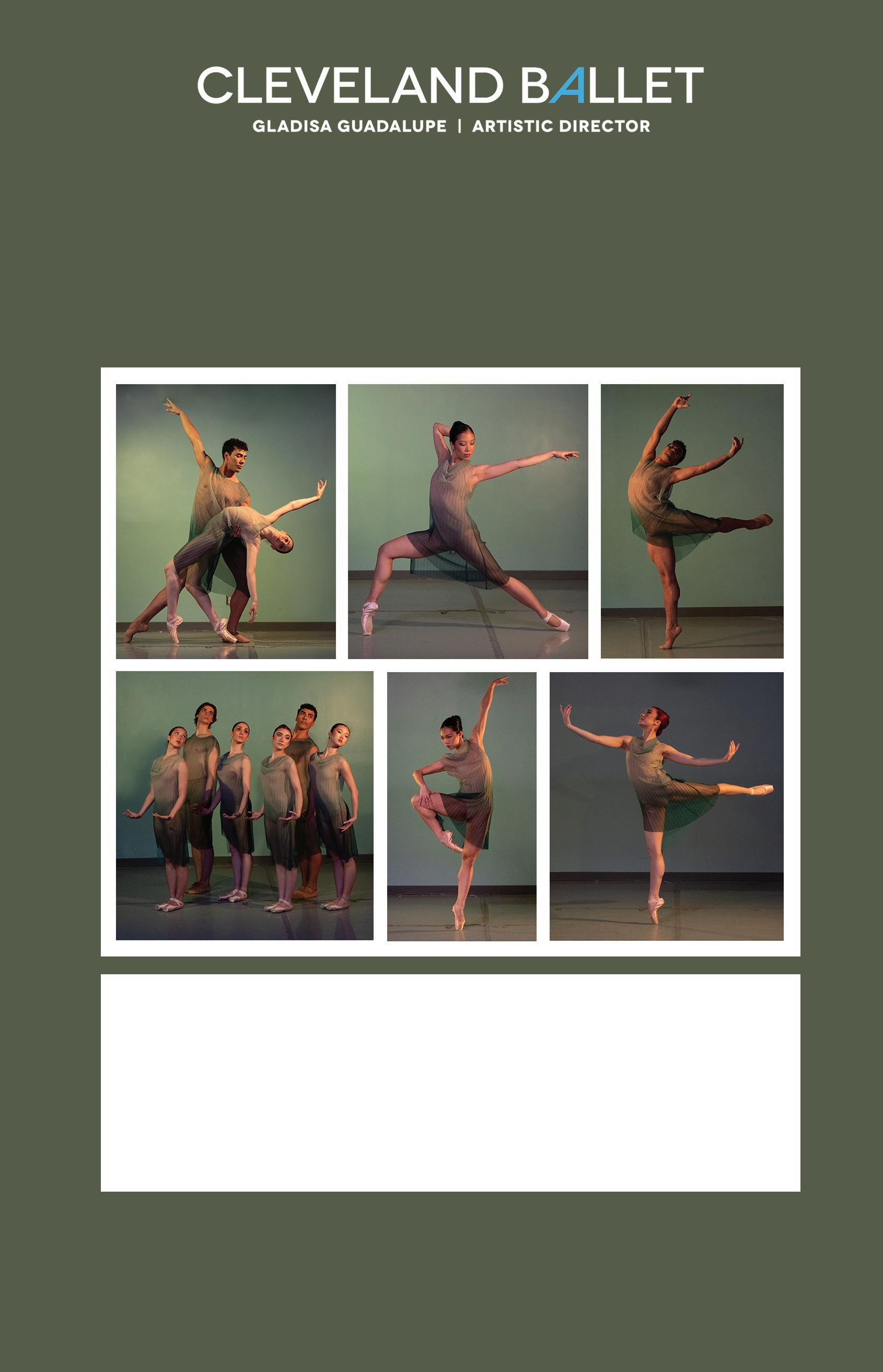


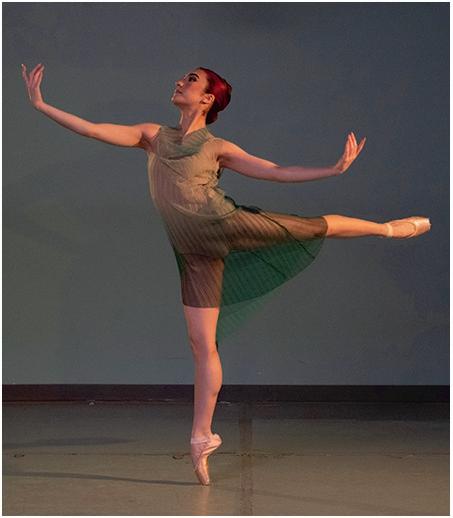

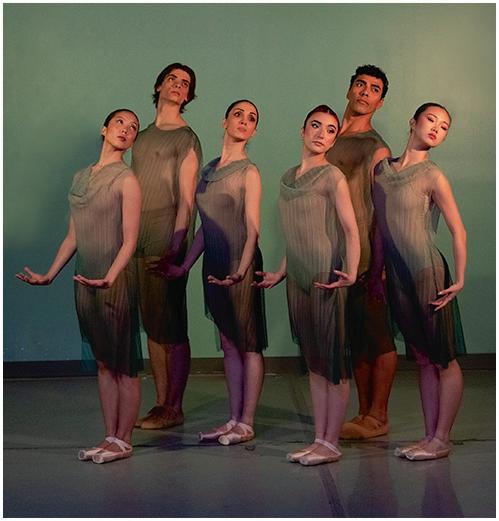



George Balanchine’s Serenade Playhouse Square’s Connor Palace | April 21-22, 2023 For tickets & additional information: clevelandballet.org | 216-320-9000 x 107 | 23020 Miles Road, Cleveland The premiere of the Cleveland Ballet Orchestra!
Jean-Yves Thibaudet piano
FOR MORE THAN THREE DECADES , Jean-Yves Thibaudet has performed worldwide, recorded more than 50 albums, and built a reputation as one of today’s finest pianists. He plays a range of solo, chamber, and orchestral repertoire — from Beethoven and Liszt to Khachaturian and Gershwin to Olivier Messiaen and Aaron Zigman.
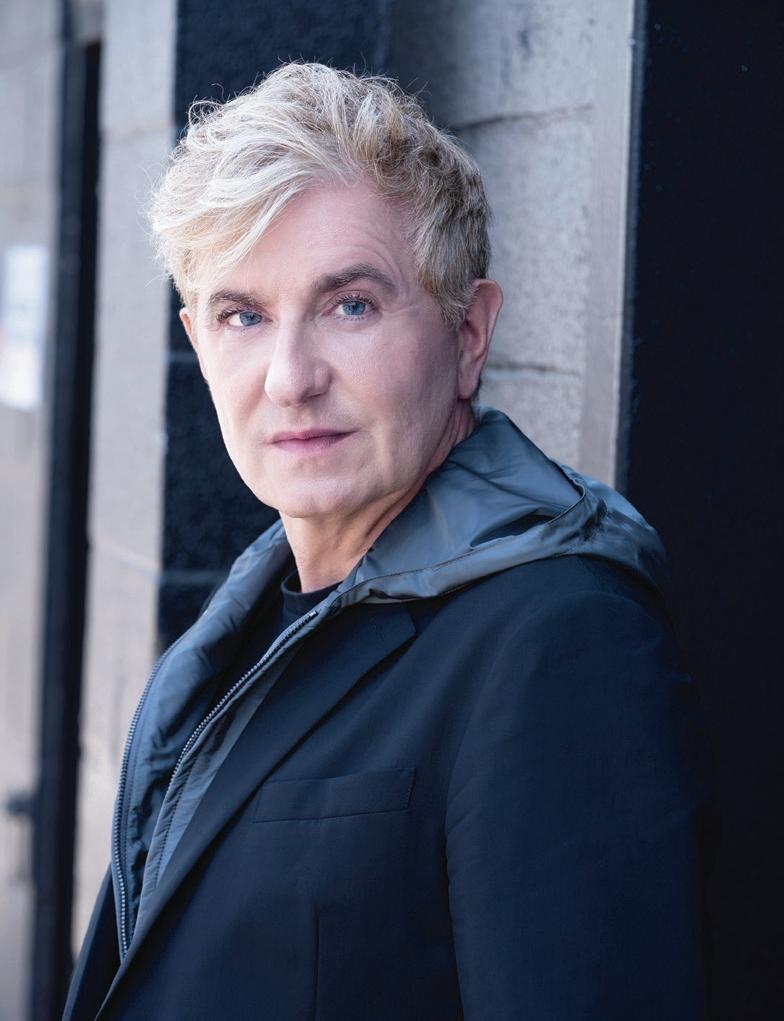
From the start of his career, he has delighted in music beyond the standard repertoire, from jazz to opera, including works which he has transcribed for the piano. His profound professional friendships crisscross the globe and have led to spontaneous and fruitful collaborations in film, fashion, and visual art.
This season, Mr. Thibaudet continues his focus on Debussy’s Préludes, with solo recitals in Seattle, Carnegie Hall, the Concertgebouw, Bilbao, Luxembourg, Metz, San Francisco, and Chapel Hill, and other prestigious venues. He also collaborates with Renée Fleming at Los Angeles’s Walt Disney Concert Hall, and joins violinist Midori on an international tour of Beethoven’s complete violin sonatas, which will be released as a recording. Beginning this spring, Thibaudet joins pianist, singer, and music historian Michael Feinstein in Two Pianos: Who Could Ask for Anything More?, a bespoke evening-length program featuring the music of George Gershwin, Cole Porter, Richard Rodgers,
and more, which will come to Blossom Music Festival in July.
Mr. Thibaudet has a lifelong passion for education and fostering young musical talent. He is the first-ever artist-in-residence at the Colburn School in Los Angeles, where he makes his home. In 2017, the school announced the Jean-Yves Thibaudet Scholarships, which provide aid for Music Academy students.
Jean-Yves Thibaudet was born in Lyon, France, where he began his piano studies at age five and made his first public appearance at age seven. Among his numerous commendations is the Victoire d’Honneur, a lifetime career achievement award and the highest honor given by France’s Victoires de la Musique. He was inducted into the Hollywood Bowl’s Hall of Fame and awarded the title Officier by the French Ministry of Culture in 2012.
THE CLEVELAND ORCHESTRA | 21 clevelandorchestra.com THE ARTIST
PHOTO BY E.CAREN























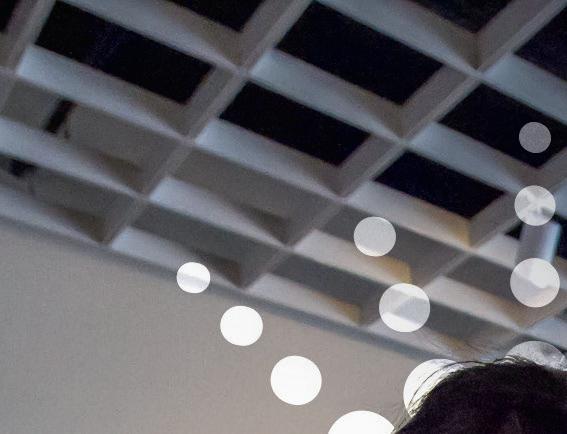


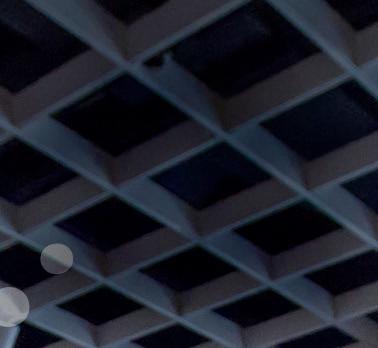
IF YOU’RE LOOKING TO E P L O R E ON L I NE ClevelandArtsEvents .com connects you to the region’s vibrant arts and culture scene. With just a few clicks, discover hundreds of events made possible in part with public funding from Cuyahoga Arts & Culture. get in touch with art. ARTLENS Gallery | The Cleveland Museum of Art IMAGE COURTESY OF
NOW IN ITS SECOND CENTURY , The Cleveland Orchestra, under the leadership of music director Franz WelserMöst since 2002, is one of the most sought-after performing ensembles in the world. Year after year, the ensemble exemplifies extraordinary artistic excellence, creative programming, and community engagement. The New York Times has called Cleveland “the best in America” for its virtuosity, elegance of sound, variety of color, and chamberlike musical cohesion.
Founded by Adella Prentiss Hughes, the Orchestra performed its inaugural concert in December 1918. By the middle of the century, decades of growth and sustained support had turned it into one of the most admired globally.
The past decade has seen an increasing number of young people attending concerts, bringing fresh attention to The Cleveland Orchestra’s legendary sound and committed programming. More recently, the Orchestra launched several bold digital projects, including the streaming broadcast series In Focus, the podcast On a Personal Note, and its own recording label, a new chapter in the Orchestra’s long and distinguished recording and broadcast history. Together, they have captured the Orchestra’s unique artistry and the musical achievements of the Welser-Möst and Cleveland Orchestra partnership.


The 2022/23 season marks Franz
Welser-Möst’s 21st year as music director, a period in which The Cleveland Orchestra earned unprecedented acclaim around the world, including a series of residencies at the Musikverein in Vienna, the first of its kind by an American orchestra, and a number of acclaimed opera presentations.
Since 1918, seven music directors —
Nikolai Sokoloff, Artur Rodziński, Erich Leinsdorf, George Szell, Lorin Maazel, Christoph von Dohnányi, and Franz Welser-Möst — have guided and shaped the ensemble’s growth and sound. Through concerts at home and on tour, broadcasts, and a catalog of acclaimed recordings, The Cleveland Orchestra is heard today by a growing group of fans around the world.
THE CLEVELAND ORCHESTRA | 23 clevelandorchestra.com
THE CLEVELAND ORCHESTRA
@ClevelandOrchestra @clevelandorchestra @CleveOrchestra @Cleveorch
PHOTO BY ROGER MASTROIANNI
THE CLEVELAND ORCHESTRA
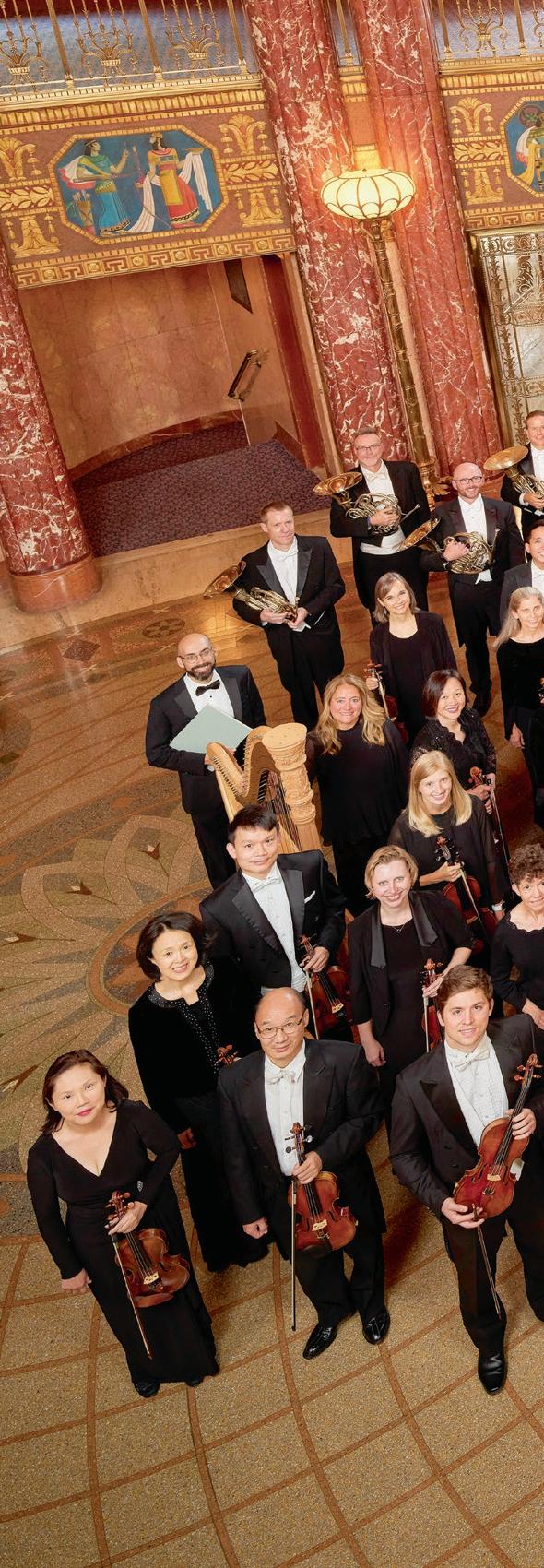
Franz Welser-Möst, MUSIC DIRECTOR
Kelvin Smith Family Chair
FIRST VIOLINS
David Radzynski
CONCERTMASTER
Blossom-Lee Chair
Peter Otto
FIRST ASSOCIATE CONCERTMASTER
Virginia M. Lindseth, PhD, Chair
Jung-Min Amy Lee
ASSOCIATE CONCERTMASTER
Gretchen D. and Ward Smith Chair
Jessica Lee
ASSISTANT CONCERTMASTER
Clara G. and George P.
Bickford Chair
Stephen Tavani
ASSISTANT CONCERTMASTER
Wei-Fang Gu
Drs. Paul M. and Renate H.
Duchesneau Chair
Kim Gomez
Elizabeth and Leslie
Kondorossy Chair
Chul-In Park
Harriet T. and David L.
Simon Chair
Miho Hashizume
Theodore Rautenberg
Chair
Jeanne Preucil Rose
Larry J.B. and Barbara S.
Robinson Chair
Alicia Koelz
Oswald and Phyllis Lerner
Gilroy Chair
Yu Yuan
Patty and John Collinson
Chair
Isabel Trautwein
Trevor and Jennie Jones
Chair
Katherine Bormann
Analisé Denise Kukelhan
Gladys B. Goetz Chair
Zhan Shu
SECOND VIOLINS
Stephen Rose*
Alfred M. and Clara T.
Rankin Chair
Eli Matthews1
Patricia M. Kozerefski and Richard J. Bogomolny
Chair
Sonja Braaten Molloy
Carolyn Gadiel Warner
Elayna Duitman
Ioana Missits
Jeffrey Zehngut
Sae Shiragami
Kathleen Collins
Beth Woodside
Emma Shook
Dr. Jeanette Grasselli
Brown and Dr. Glenn R. Brown Chair
Yun-Ting Lee
Jiah Chung Chapdelaine
VIOLAS
Wesley Collins*
Chaillé H. and Richard B.
Tullis Chair
Lynne Ramsey1
Charles M. and Janet G.
Kimball Chair
Stanley Konopka2
Mark Jackobs
Jean Wall Bennett Chair
Lisa Boyko
Richard and Nancy
Sneed Chair
Richard Waugh
Lembi Veskimets
The Morgan Sisters Chair
Eliesha Nelson
Joanna Patterson Zakany
William Bender
Gareth Zehngut
CELLOS
Mark Kosower*
Louis D. Beaumont Chair
Richard Weiss1
The GAR Foundation Chair
Charles Bernard2
Helen Weil Ross Chair
Bryan Dumm
Muriel and Noah Butkin
Chair
Tanya Ell
Thomas J. and Judith Fay
Gruber Chair
Ralph Curry
Brian Thornton
William P. Blair III Chair
David Alan Harrell
Martha Baldwin
Dane Johansen
Paul Kushious
BASSES
Maximilian Dimoff*
Clarence T. Reinberger
Chair
Derek Zadinsky2
Charles Paul1
Mary E. and F. Joseph Callahan Chair
Mark Atherton
Thomas Sperl
Henry Peyrebrune
Charles Barr Memorial Chair
Charles Carleton
Scott Dixon
HARP
Trina Struble*
Alice Chalifoux Chair
FLUTES
Joshua Smith*
Elizabeth M. and William C. Treuhaft Chair
Saeran St. Christopher
Jessica Sindell2
Austin B. and Ellen W. Chinn Chair
Mary Kay Fink
PICCOLO
Mary Kay Fink
Anne M. and M. Roger Clapp Chair
OBOES
Frank Rosenwein*
Edith S. Taplin Chair
Corbin Stair
Sharon and Yoash Wiener Chair
Jeffrey Rathbun2
Everett D. and Eugenia S.
McCurdy Chair
Robert Walters
ENGLISH HORN
Robert Walters
Samuel C. and Bernette K. Jaffe Chair
CLARINETS
Afendi Yusuf*
Robert Marcellus Chair
Robert Woolfrey
Victoire G. and Alfred M. Rankin, Jr. Chair
Daniel McKelway2
Robert R. and Vilma L.
Kohn Chair
Amy Zoloto
E-FLAT CLARINET
Daniel McKelway
Stanley L. and Eloise M. Morgan Chair
BASS CLARINET
Amy Zoloto
Myrna and James Spira Chair
BASSOONS
John Clouser*
Louise Harkness Ingalls Chair
Gareth Thomas
Barrick Stees2
Sandra L. Haslinger Chair
Jonathan Sherwin
CONTRABASSOON
Jonathan Sherwin
HORNS
Nathaniel Silberschlag*
George Szell Memorial Chair
24 | 2022/2023 SEASON
Michael Mayhew§ Knight Foundation Chair
Jesse McCormick
Robert B. Benyo Chair
Hans Clebsch
Richard King
TRUMPETS
Michael Sachs* Robert and Eunice Podis
Weiskopf Chair
Jack Sutte
Lyle Steelman2
James P. and Dolores D. Storer Chair
Michael Miller
CORNETS
Michael Sachs*
Mary Elizabeth and G. Robert Klein Chair
Michael Miller
TROMBONES
Brian Wendel*
Gilbert W. and Louise I. Humphrey Chair
Richard Stout Alexander and Marianna C. McAfee Chair
Shachar Israel2
EUPHONIUM & BASS TRUMPET
Richard Stout
TUBA
Yasuhito Sugiyama*
Nathalie C. Spence and Nathalie S. Boswell Chair
TIMPANI
Paul Yancich*
Otto G. and Corinne T. Voss Chair
PERCUSSION
Marc Damoulakis*
Margaret Allen Ireland Chair
Donald Miller
Thomas Sherwood
KEYBOARD INSTRUMENTS
Carolyn Gadiel Warner
Marjory and Marc L. Swartzbaugh Chair
LIBRARIANS
Michael Ferraguto
Joe and Marlene Toot Chair
Donald Miller
ENDOWED CHAIRS CURRENTLY UNOCCUPIED
Elizabeth Ring and William
Gwinn Mather Chair
Paul and Lucille Jones Chair
James and Donna Reid Chair
Sunshine Chair
Mr. and Mrs. Richard K.
Smucker Chair
Rudolf Serkin Chair
CONDUCTORS
Christoph von Dohnányi MUSIC DIRECTOR
LAUREATE
Daniel Reith
ASSISTANT CONDUCTOR
Sidney and Doris Dworkin Chair
Lisa Wong
DIRECTOR OF CHORUSES
Frances P. and Chester C. Bolton Chair
* Principal
§ Associate Principal
1 First Assistant Principal
2 Assistant Principal
This roster lists full-time members of The Cleveland Orchestra. The number and seating of musicians onstage varies depending on the piece being performed. Seating within the string sections rotates on a periodic basis.
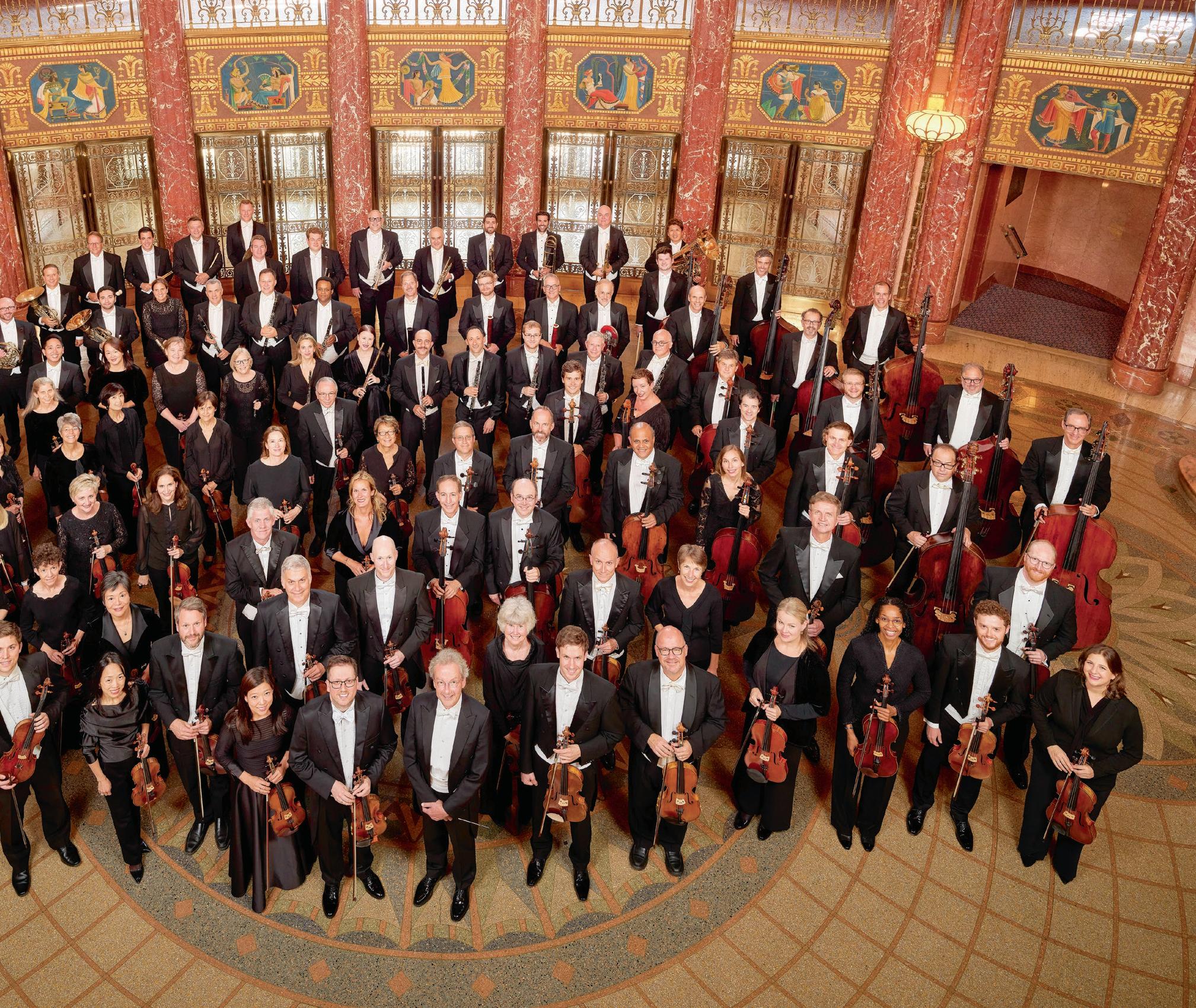
THE CLEVELAND ORCHESTRA | 25 clevelandorchestra.com
PHOTO BY ROGER MASTROIANNI
Join us this spring!
APR 6, 7, 8
SHOSTAKOVICH’S
TCO REWARDS
The place for fans of The Cleveland Orchestra!
It’s easy to get TCO Rewards points and earn your way toward great perks like seat upgrades, merchandise, exclusive content, and more!
FIFTH SYMPHONY
Rafael Payare, conductor
Jean-Yves Thibaudet, piano
BERNSTEIN Symphony No. 2
(“The Age of Anxiety”)
SHOSTAKOVICH Symphony No. 5
APR 13, 15, 16
MAHLER’S TITAN
Michael Tilson Thomas, conductor
Leif Ove Andsnes, piano
DEBUSSY Jeux, poème dansé
DEBUSSY Fantaisie for Piano and Orchestra
MAHLER Symphony No. 1 (“Titan”)
IT’S FREE
TCO Rewards are a FREE feature of your Cleveland Orchestra account. Simply login, or create an account and click Rewards.

IT’S EASY
Earn points for all the things you already do with The Cleveland Orchestra, such as attend concerts, watch videos, and read articles.

GREAT PERKS
Use your points to get great perks like tickets, merchandise, VIP experiences, and exclusive content.
clevelandorchestra.com/ rewards
and enter the code above to earn
bonus points
APR 20, 21, 22, 23
ALL MOZART
Bernard Labadie, conductor

Lucy Crowe, soprano
MOZART Overture to La clemenza di Tito
MOZART “Giunse al fin il momento... Al desio di chi t’adora”
MOZART Ruhe Zanft from Zaide
MOZART Masonic Funeral Music
MOZART “Venga la morte... Non temer, amato bene”
MOZART Symphony No. 41
(“Jupiter”)
APR 27, 28, 29
MARSALIS AND NEW WORLD
Franz Welser-Möst, conductor
Michael Sachs, trumpet
EASTMAN Symphony No. 2
MARSALIS Concerto for Trumpet
DVOŘÁK Symphony No. 9
(“From the New World”)
MAY 3
MARIA JOÃO PIRES IN RECITAL
Maria João Pires, piano
SCHUBERT Piano Sonata No. 13
DEBUSSY Suite Bergamasque
SCHUBERT Piano Sonata No. 21
MAY 4, 6
WEILERSTEIN PLAYS BARBER
Franz Welser-Möst, conductor
Alisa Weilerstein, cello
LOGGINS-HULL Can You See?
BARBER Cello Concerto
PROKOFIEV Symphony No. 4
MAY 14, 17, 20
THE GIRL OF THE GOLDEN WEST
Franz Welser-Möst, conductor
Tamara Wilson, soprano (Minnie)
Roman Burdenko, bass (Jack Rance)
Limmie Pulliam, tenor (Dick Johnson)
Cleveland Orchestra Chorus
PUCCINI La Fanciulla del West
(The Girl of the Golden West)
The Opera presentation is sung in Italian with projected supertitles.
clevelandorchestra.com
SPECIAL
2223PROGRAM Scan
OFFER
10
A FESTIVAL OF CONCERTS, CONVERSATIONS & IDEAS
FESTIVAL CONCERTS & KEYNOTE
MAY 11
FRAGMENTS 1
Alisa Weilerstein, cello
MAY 13
KEYNOTE SPEAKER
ISABEL WILKERSON
MAY 14, 17 & 20
PUCCINI’S OPERA IN CONCERT
THE GIRL OF THE GOLDEN WEST
The Cleveland Orchestra
Franz Welser-Möst, conductor
Tamara Wilson, soprano (Minnie)
Roman Burdenko, bass (Jack Rance)
Limmie Pulliam, tenor (Dick Johnson)
Cleveland Orchestra Chorus
MAY 19
DREAMS WE’VE DREAMED; SONGS WE’VE SUNG; HOPES WE’VE HELD
The Cleveland Orchestra
Franz Welser-Möst, conductor
FREE EVENTS
MAY 13
UNITED IN SONG!
A COMMUNITY CELEBRATION
MAY 18
THE AMERICAN DREAM, THE AMERICAN NIGHTMARE, AND BLACK AMERICAN MUSIC
MAY 20
A STUDY DAY: EXPLORATIONS OF THE AMERICAN DREAM
MAY 11–20
SEVERANCE MUSIC CENTER
Scan the QR code for more festival information & details.

HEALTH & SAFETY
The Cleveland Orchestra is committed to creating a comfortable, enjoyable, and safe environment for all guests at Severance Music Center. While mask and COVID-19 vaccination are recommended they are not required. Protocols are reviewed regularly with the assistance of our Cleveland Clinic partners; for up-to-date information, visit: clevelandorchestra. com/attend/health-safety
LATE SEATING
As a courtesy to the audience members and musicians in the hall, late-arriving patrons are asked to wait quietly until the first convenient break in the program. These seating breaks are at the discretion of the House Manager in consultation with the performing artists.
PAGERS, CELL PHONES & WRISTWATCH ALARMS
As a courtesy to others, please silence all devices prior to the start of the concert.
PHOTOGRAPHY, VIDEOGRAPHY & RECORDING
Audio recording, photography, and videography are prohibited during performances at Severance. Photographs can only be taken when the performance is not in progress.
HEARING AIDS & OTHER HEALTH-ASSISTIVE DEVICES
For the comfort of those around you, please reduce the volume on hearing aids and other devices that may produce a noise that would detract from the program. For Infrared Assistive-Listening Devices, please see the House Manager or Head Usher for more details.
FREE MOBILE APP TICKET WALLET
IN THE EVENT OF AN EMERGENCY
Contact an usher or a member of house staff if you require medical assistance. Emergency exits are clearly marked throughout the building. Ushers and house staff will provide instructions in the event of an emergency.
AGE RESTRICTIONS
Regardless of age, each person must have a ticket and be able to sit quietly in a seat throughout the performance. Classical season subscription concerts are not recommended for children under the age of 8. However, there are several age-appropriate series designed specifically for children and youth, including Music Explorers (for 3 to 6 years old) and Family Concerts (for ages 7 and older).
The Cleveland Orchestra is grateful to the following organizations for their ongoing generous support of The Cleveland Orchestra: the State of Ohio and Ohio Arts Council and to the residents of Cuyahoga County through Cuyahoga Arts and Culture.
For more information and direct links to download, visit clevelandorchestra.com/ticketwallet or scan the code with your smartphone camera to download the app for iPhone or Android.
Available for iOS and Android on Google Play and at the Apple App Store.
The Cleveland Orchestra is proud of its long-term partnership with Kent State University, made possible in part through generous funding from the State of Ohio. The Cleveland Orchestra is proud to have its home, Severance Music Center, located on the campus of Case Western Reserve University, with whom it has a long history of collaboration and partnership.
© 2023 The Cleveland Orchestra and the Musical Arts Association
Program books for Cleveland Orchestra concerts are produced by The Cleveland Orchestra and are distributed free to attending audience members.
EDITORIAL
Amanda Angel, Program Editor, Managing Editor of Content aangel@clevelandorchestra.com
Kevin McBrien, Editorial Assistant
DESIGN
Elizabeth Eddins, eddinsdesign.com
ADVERTISING
Live Publishing Company, 216-721-1800
28 | 2022/2023 SEASON
YOUR VISIT
Download today for instant, secure and paperless access to your concert tickets.
clevelandorchestra.com Cleveland Orchestra performances are broadcast as part of regular programming on ideastream/WCLV Classical 90.3 FM, Saturdays at 8 p.m. and Sundays at 4 p.m.

Open now | Tickets at cma.org | CMA Members FREE
Henry VIII, “Bloody Mary,” and Elizabeth “The Virgin Queen” as you immerse yourself in the opulence and drama of the Tudor reign. Featuring iconic portraits, intricately wrought armor, glittering tapestries woven with gold and more, this fascinating exhibition explores the magnificent art that fostered a dynasty.
Kind.
AND M AJESTY IN RENAISSANCE ENGLAND
E
U D O R S
Meet
Guess I’m Just The Marrying
ART
TH
T
RENAISSANCE ENGLAND TH E
O R S
ART AND M AJESTY IN
TUD
RENAISSANCE ENGLAND
O R S Henry VIII (detail), c. 1537. Workshop of Hans Holbein the Younger. Oil on panel; 239 x 134.5 cm. National Museums Liverpool, Walker Art Gallery, Purchased by the Walker Art Gallery in 1945, WAG 1350 cma.org
ART AND M AJESTY IN
TH E TUD
A SYMPHONY OFSuccess

We believe that all Cleveland youth should have access to high-quality arts education. Through the generosity of our donors, we are investing to scale up neighborhoodbased programs that now serve 3,000 youth year-round in music, dance, theater, photography, literary arts and curatorial mastery. That’s a symphony of success. Find your passion, and partner with the Cleveland Foundation to make your greatest charitable impact.

(877)554-5054
w ww.ClevelandFoundation.org
Institute El Sistema Orchestra
Rainey






 Sarah Maxwell, passionate Orchestra supporter
Sarah Maxwell, passionate Orchestra supporter














































































